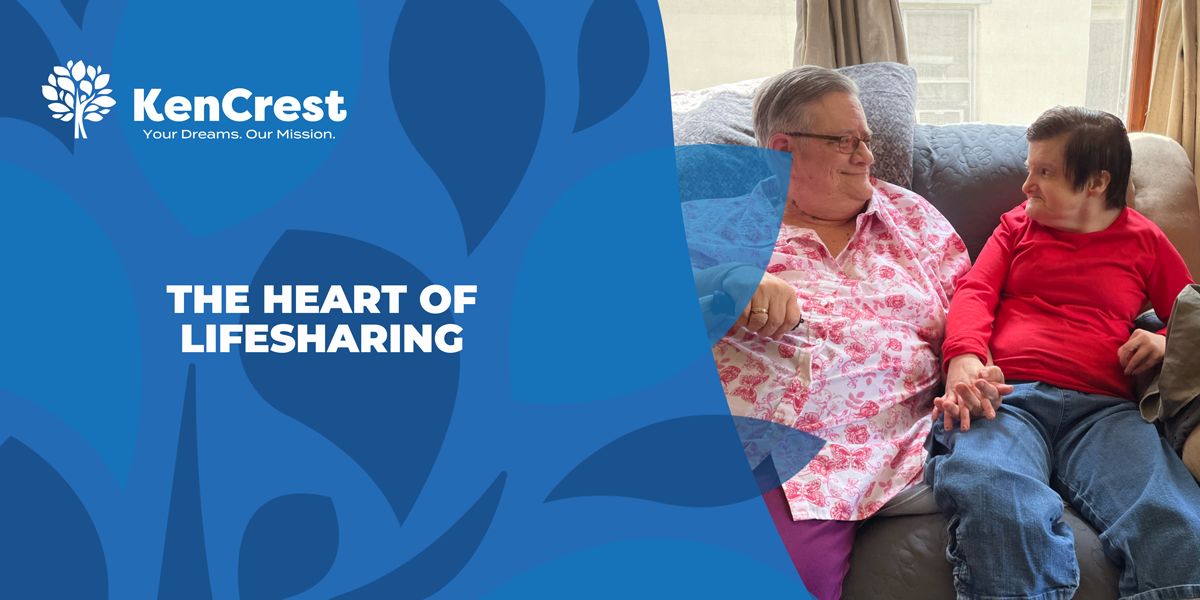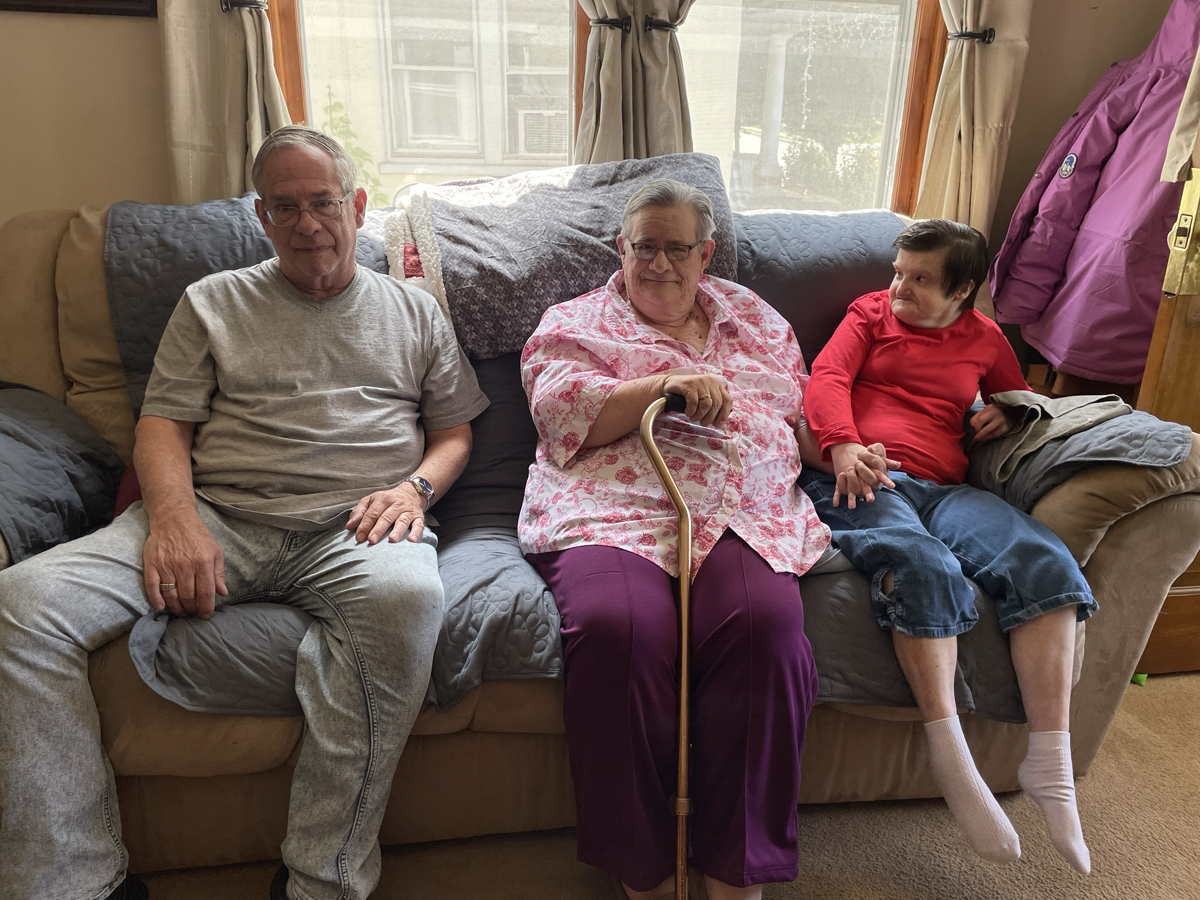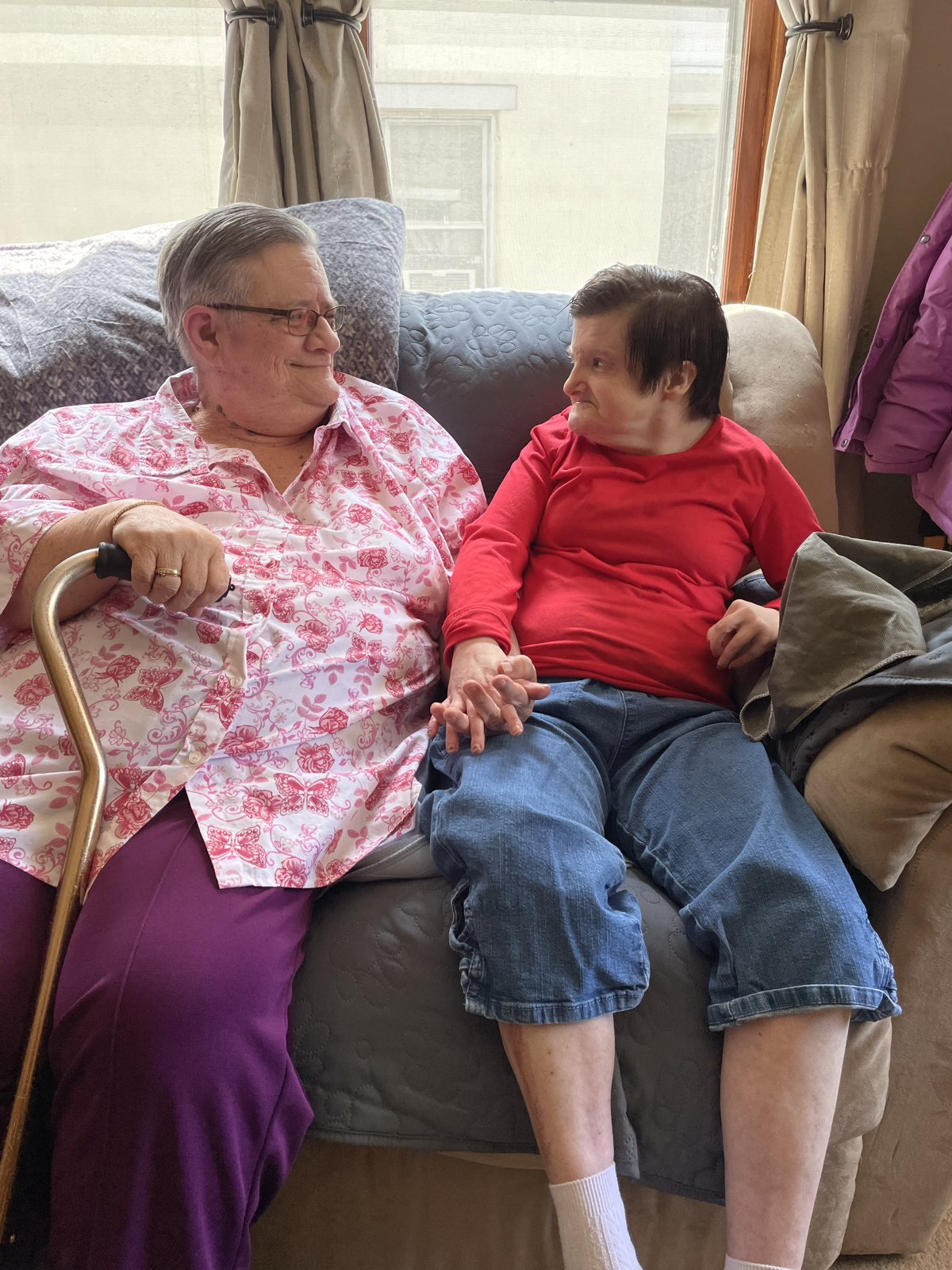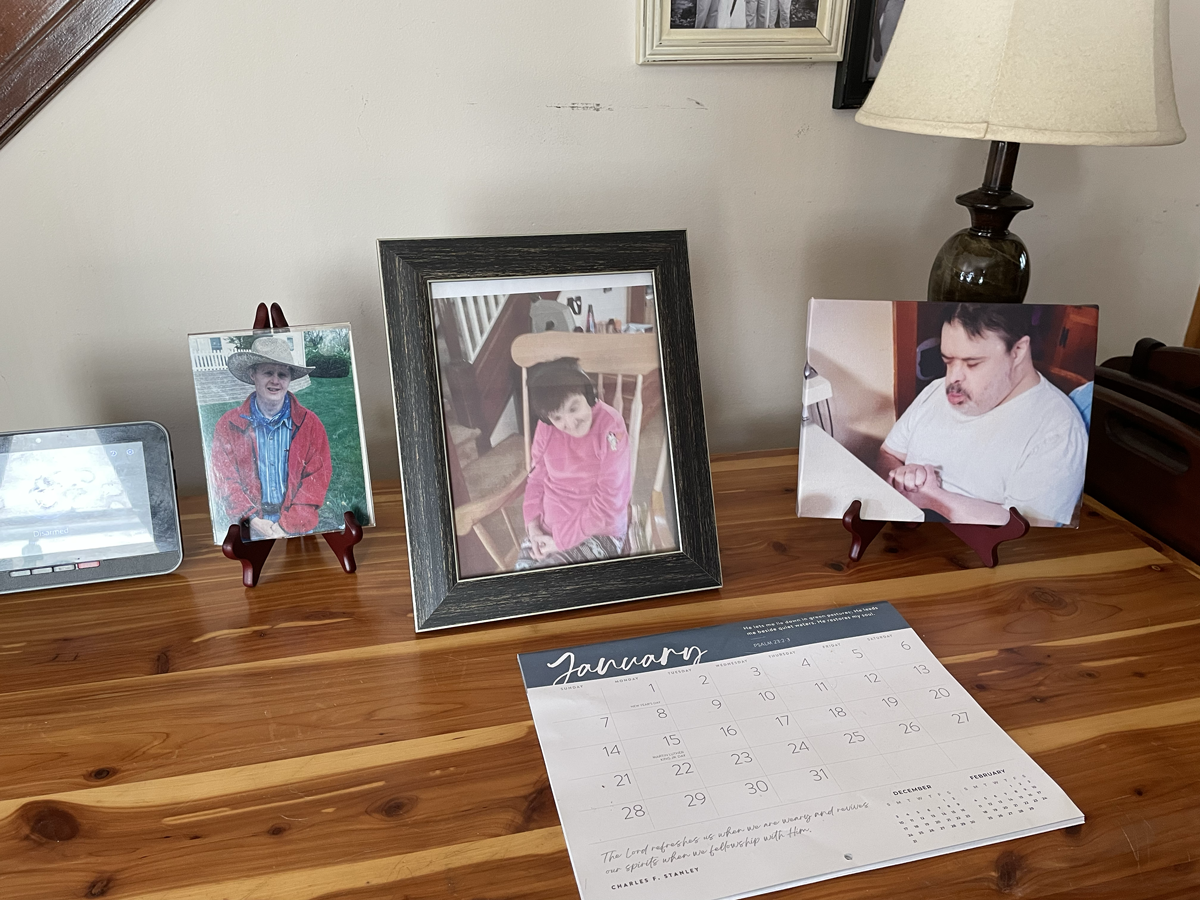
Ron and Cindy Ryder have been supporting individuals with intellectual and developmental disabilities through Lifesharing for more than 30 years.
By Sydney Kerelo
For over 30 years, Cindy and Ron Ryder have supported individuals with intellectual and developmental disabilities in Pennsylvania. Their journey began in 1976 at RiverCrest, which was formerly a home and dormitory for children with Tuberculosis before it transitioned to a facility for individuals with disabilities.
Both Ron and Cindy worked at RiverCrest, helping those with disabilities. Throughout the years, they formed deep connections with many people, including one resident, Dan. The couple became so close to Dan that they wanted to pursue Lifesharing. This program connects people with disabilities to families that want to bring them into their hearts, their homes, and within their family.
Their decision to bring Dan into their home marked the beginning of a new chapter in their lives.
At the time, they worked as Program Managers and lived in one of KenCrest’s Adult Community Living Homes. To take in Dan through Lifesharing, they needed to have their own home. So, Ron and Cindy moved into a new apartment and continued working in the group home. One day, as Cindy prepared to head home from work, she noticed one of the residents, Ted, getting upset that she was leaving.

She asked, “Do you want to see my home and come have dinner with my family?” He got a huge smile on his face, sprung up from his seat, and grabbed his coat; he was so excited to go. That was the first night he had dinner with the Ryders, and after that night, they knew he wasn’t going back to residential living. He would be living with them.
After that, Dan and Ted lived with the Ryders and their daughter Christina, who grew up going to the pool, camping, and taking family vacations with Ted and Dan. They became her brothers, and the Ryders became their family.
One year, Ron installed an above-ground pool in the backyard of their home. "You couldn’t get Ted to go in, and you couldn’t get Dan to get out,” laughs Ron. But once they got in, they walked inside the pool for hours.
There were many good memories made with Dan and Ted. Ron remembers one camping trip to French Creek, where Dan went for a walk while Ted was swimming. Dan ran into the bathroom stalls, and after a few minutes, Dan came walking down with a leather jacket on—one he had not had on before. Laughing, Ron says, “That was just who he was; he was funny and full of life. We would go to the mall, and he would stop, take off his shoe, put it on the rack outside the store, and then put on the new shoe he wanted. You’d have to make him take the shoe off and return it, but he did it to make you smile. He was pretty funny.”
In 2010, Ted sadly passed away, and both his family and the Ryders were present. They grieved for him together, and KenCrest hosted a home-going ceremony at the bowling alley he would frequent. His family said that the best years of their son’s life were spent in Lifesharing.
Years later, the Ryders remain in contact with Ted’s family. “It's become wonderful; we have formed a very big extended family now,” says Ron. “His parents passed, and his three sisters have passed, but his brother lives in New Jersey, and we still keep in contact with him.”
One of Cindy’s fondest memories she was sick, he would come home from his workshop, pull a chair beside her, tap her on the leg, and say, “It’ll be okay.”
“I think that’s the most important thing, the unconditional love you get back,” says Cindy. “You can’t put a price tag on that.”
For five years, Ted’s room sat empty. “We just didn’t feel comfortable filling it then,” says Ron. “Then we heard about Miss Amy, who had been with another provider for 28 years and decided to retire. So, we began doing respite with her, and from there, we decided she would stay; she was a part of our family.” This Christmas, Amy will celebrate her ninth year living with the Ryders.


One of the things that made Amy’s welcome into the Ryder family so special was that she already knew Dan. They met through dances and KenCrest programs and would take music classes together weekly, so bringing her into Lifesharing made sense.
Amy and Dan had a close relationship. During music class, Dan would play the tambourine, and Amy would play the rhythm sticks. During class, Dan would drop his tambourine on purpose, pretending he didn’t want to play until Amy would go over and pick it up and get him started again. Their relationship was sweet and pure, and it only increased as they became a part of the same Lifesharing family.
A few years ago, Dan’s health declined drastically, so much so that he now requires nursing home-level care. Although he no longer lives with the Ryders, he’s still a part of their family, and the couple visits him weekly.
“You have to have the desire to do Lifesharing,” says Cindy. “It's not about the stipend you get from doing it; if you do it for the money, you won’t last. You do it because you want to. Because you want to touch someone's life because it’s rewarding. They will be a part of your family and rely on you.”
“No matter where you go, you need to be ready to advocate for them because there’s so many people out in the world that either don’t care to help them or don’t know how to,” adds Ron.
Even though Ted and Dan are no longer with the Ryders, they still remember them and cherish the memories they made. Inside their home, along the back wall, sits a table with framed photos displayed of Ted, Dan, Amy, and their daughter Christina. They will forever be a part of their family and love them just the same.
Lifesharing is about more than taking care of someone; it's about including them in your family, home, and heart. They become a part of your family, and you become a part of theirs.
